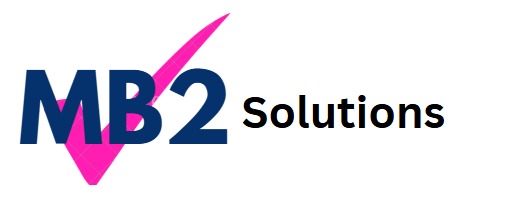
SAQA ID
61591

Credits
130
The purpose of the qualification is to build the knowledge and skills required by learners in End User Computing. It is intended to empower learners to acquire knowledge, skills, attitudes and values required to operate confidently in the End User Computing environment in the South African community and to respond to the challenges of the economic environment.
The qualification addresses the need in the workplace for nationally recognised qualifications, based on unit standards, which will allow learners with workplace experience in End User Computing to obtain recognition for prior learning.
The qualification provides a framework for learners to develop skills that will enable them to become competent in End User Computing. It introduces theoretical concepts of End User Computing and requires the application thereof, to develop a range of skills that will enable learners to be better-informed workers in their chosen industry. It provides a balanced learning experience that lays the foundation for access to further education, life long learning and to productive employment.
Rules regarding Fundamental, Core and Electives
- All fundamental unit standards are compulsory for this qualification. (47 credits)
- All core unit standards are compulsory. (56 credits)
Rules regarding Electives
- Elective unit standards totalling a minimum of 27 credits needs to be completed.
1. Core Unit Standards
- Describe the concepts of Information and Communication Technology (ICT) and the use of its components in a healthy and safe manner
- Enhance, edit and organise electronic messages using a Graphical User Interface (GUI)-based messaging application
- Use a Graphical User Interface (GUI)-based presentation application to prepare and produce a presentation according to a given brief
- Use a Graphical User Interface (GUI)-based spreadsheet application to create and edit spreadsheets
- Use a Graphical User Interface (GUI)-based web-browser to search the Internet
- Use a Graphical User Interface (GUI)-based word processor to format documents
- Use electronic mail to send and receive messages
- Use a Graphical User Interface (GUI)-based database application to work with simple databases
- Use a Graphical User Interface (GUI)-based presentation application to enhance presentation appearance
- Use a Graphical User Interface (GUI)-based spreadsheet application to solve a given problem
- Use a GUI-based word processor to create merged documents
- Use a GUI-based word processor to enhance a document through the use of tables and columns
- Demonstrate an understanding of the principles of the internet and the world-wide-web
- Use computer technology to research a computer topic
- Using a Graphical User Interface (GUI)-based spreadsheet application, enhance the functionality and apply graph /charts to a spreadsheet.
2. Fundamental Unit Standards
- Accommodate audience and context needs in oral communication
- Demonstrate an understanding of the use of different number bases and measurement units and an awareness of error in the context of relevant calculations
- Demonstrate knowledge and understanding of HIV/AIDS in a workplace, and its effects on a business sub-sector, own organisation and a specific workplace
- Describe, apply, analyse and calculate shape and motion in 2-and 3-dimensional space in different contexts
- Investigate life and work related problems using data and probabilities
- Perform Basic Business Calculations
- Use language and communication in occupational learning programmes
- Use mathematics to investigate and monitor the financial aspects of personal, business and national issues
- Write texts for a range of communicative contexts
- Present information in report format
3. Elective Unit Standards
- Use generic functions in a Graphical User Interface (GUI)-environment
- Apply electronic messaging and calendar application
- Change the appearance of a spreadsheet
- Demonstrate an understanding of preventative maintenance, environmental and safety issues in a computer environment
- Describe data communications
- Describe the principles of Computer Programming
- Explain the principles of computer networks
- Function in a business environment
- Investigate the use of computer technology in an organisation
- Manage electronic mail in a business environment
- Monitor and control the maintenance of office equipment
- Review and create documents using a Graphical User Interface (GUI)-based word processor
- Utilise special features to enhance presentations
- Apply a range of project management tools
- Demonstrate knowledge of and manipulate master and subdocuments in a Graphical User Interface (GUI)-based word processor
- Describe the application and effect of Information and Communication Technologies (ICT) on society
- Design complex tables and queries using a graphical user interface (GUI) based database to solve a given problem
- Design forms and reports using a Graphic User Interface (GUI) based database
- Ensure spreadsheet integrity to enhance reliability
- Explain computer architecture concepts
- Implement project administration processes according to requirements
- Interpret basic financial statements
- Manipulate data and ensure integrity
- Use a Graphical User Interface (GUI)-based database application to solve a given problem
- Work as a project team member
- Work with spreadsheets
- Identify and explain ICT risks and recommend security solutions
The minimum entry requirement for this qualification is:
- Grade 12 (Competency in the English language & Mathematical Literacy) OR,
- NQF Level 4 qualification.

Pricing

Delivery Mode
Hybrid Full Time/Online

Campus Location
Dynamic
What will a qualified learner be able to do?
- Competently apply the knowledge, techniques & skills of End User Computing applications in the workplace.
- Understand the impact and use Information Communication & Technology (ICT) in an organisation and society.
- Improve Communication by combining communication skills with End User Computing skills.
- Improve the application of mathematical literacy in the workplace, by better utilising applicable End User Computing Applications
Exit Level Outcomes
- Demonstrate an understanding of applying Graphical User Interface (GUI)-based Word Processing Application skills in the Workplace.
- Demonstrate an understanding of applying Graphical User Interface (GUI)-based Presentation Application skills in the Workplace.
- Demonstrate an understanding of applying GUI-based Spreadsheet Application skills in the Workplace.
- Demonstrate an understanding of applying GUI-based Electronic Mail Application skills in the Workplace.
- Demonstrate an understanding of applying GUI-based Web Browser Application skills in the Workplace.
- Improve Communication by combining communication skills with End User Computing skills.
- Improve the application of mathematical literacy in the workplace, by better utilising End User Computing Applications.
- Demonstrate an understanding of the use of Information Communications & Technology (ICT) in an organisation & the impact it has on societies.
Integrated Assessment
Development of the competencies may be achieved through a combination of formal and informal learning, self-learning, training programmes and work-based application.
Providers should conduct diagnostic and formative assessment. Formative, continuous and diagnostic assessments should also take place in the work place, if applicable. The learner should also be able to assess him or herself and determine readiness for a summative assessment against this qualification.
During integrated assessments the assessor should make use of formative and summative assessment methods and should assess combinations of practical, applied, foundational and reflexive competencies.
To ensure the principles of assessment of fairness, validity, reliability and practicability are upheld, a combination of the assessment methods of observation, product evaluation and questioning should be used, by applying the appropriate assessment tools (as described in the SAQA criteria and guidelines for assessment).

